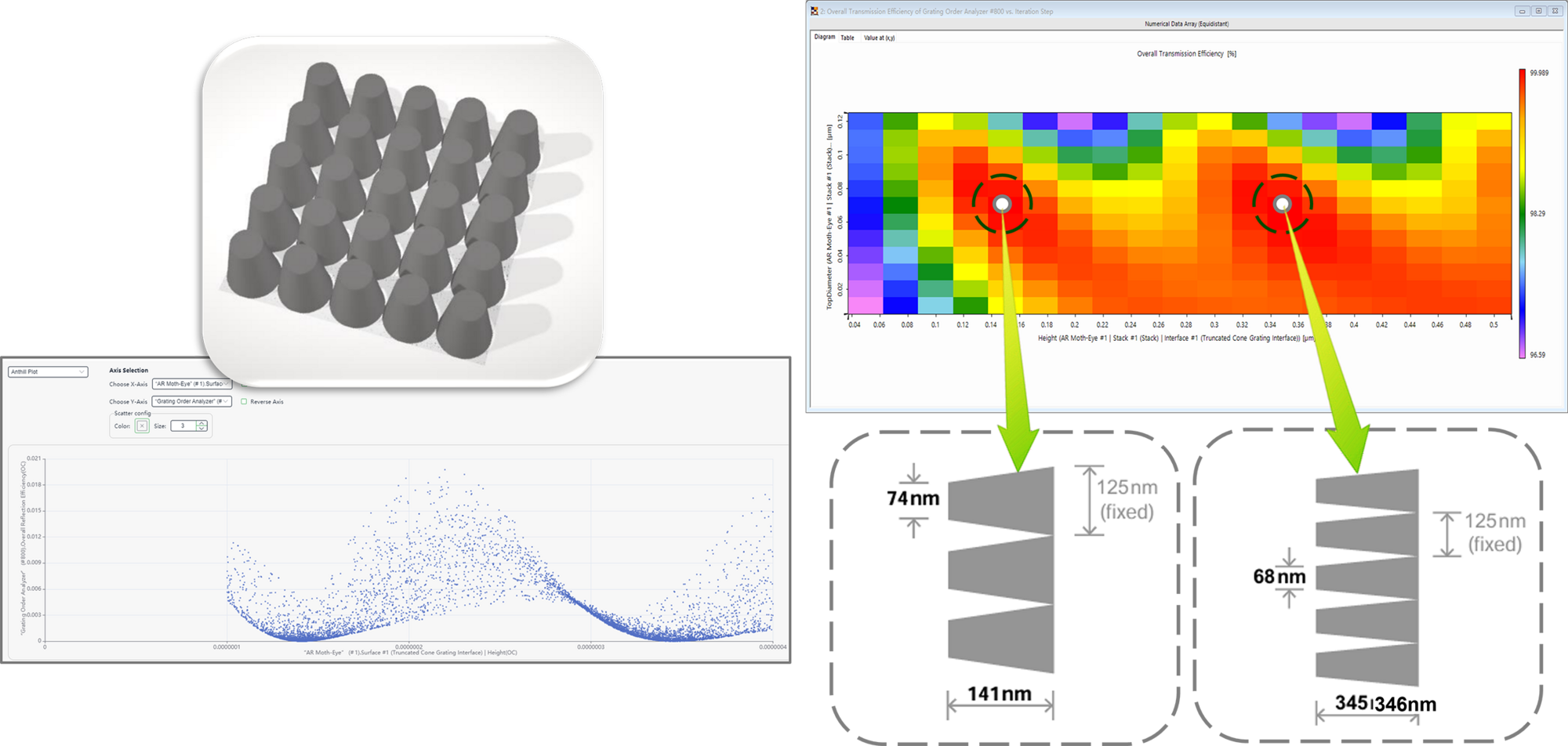Optimization of Anti-Reflective Moth-Eye Structures
Abstract
Moth-eye structures are frequently utilized to impart anti-reflective (AR) properties to surfaces due to their unique and intricate designs. However, the complexity of these structures often leads to the presence of multiple local minima during optimization processes. To effectively address this challenge, two primary strategies can be employed. The first strategy involves conducting a rough parameter sweep to identify a promising starting point for subsequent local optimization. The second strategy entails initiating the optimization process with a global optimization algorithm.
In this use case, we will investigate and compare these two strategies in the context of an equidistant gridded moth-eye structure, evaluating their efficancy and outcomes in optimizing AR properties.
Downloads
Should you wish to trial this use case, you will require the Optimization Package. If you do not currently have this, please contact our sales department to request an evaluation licence.
Request Evaluation Licence
VirtualLab Fusion Configuration
-
 VirtualLab Fusion
VirtualLab Fusion
-
 Optimization Package
Optimization Package

